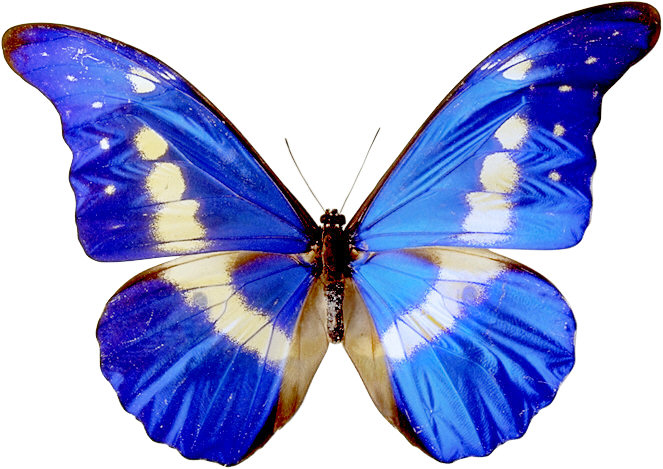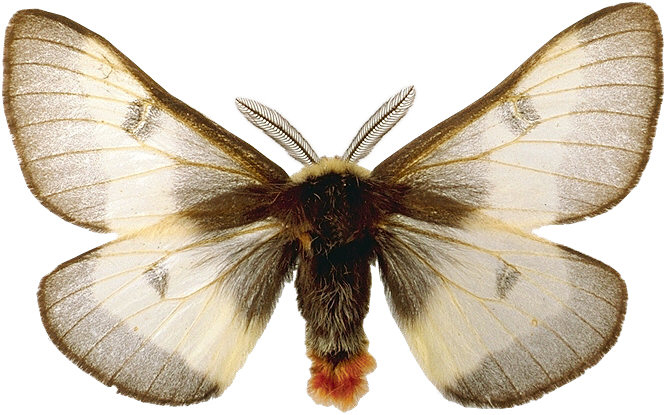The term Lepidoptera, which means "scaled wings" refers to butterflies and moths. Butterflies and moths are arthropods and insects. The special characteristics that make an insect a member of the Order Lepidoptera are:
There are several differences between butterflies and moths, but all of these generalizations have exceptions! The main differences include:
| Butterflies |
|
Moths |
 |
|
 |
| | | |
Antennae:
Antennae are clubbed or hooked. |
|
Antennae:
Antennae are either feathery, or pointed. There is no hook or club on the end. |
Activity:
Butterflies are usually most active during the day (diurnal). Some butterflies most active at dawn and dusk (crepuscular) instead of during the heat of the day. |
|
Activity:
Most moths are active during the night (nocturnal). |
Coloration:
Most butterflies are brightly colored. |
|
Coloration:
Most moths have dull brownish or gray coloration. |
Body Size:
Butterfly bodies are generally smooth and slender. |
|
Body Size:
Moth bodies are generally thicker and "furry" looking. |
Pupa:
Butterflies pupate in a chrysalis (chrysalides, plural). Butterflies do not form cocoons. |
|
Pupa:
Moth pupa are often enclosed within a silken cocoon. (Some moths incorporate leaves into the cocoon.) The cocoon itself is NOT the pupa! The caterpillar makes the cocoon and then pupates inside it. Some moth caterpillars bury themselves in the soil and pupate underground. These moths do not make cocoons to protect the pupa. |
Wing Morphology:
Wings are not hooked together. |
|
Wing Morphology:
Forewing and hindwing on each side is coupled with a "hook." |
Wings at Rest:
Wings are generally held vertically over body at rest. (However, when butterflies are basking in the sun, their wings are held outstretched at sides.) |
|
Wings at Rest:
In most moths, wings are held horizontally or chevron-like with hindwings covered at rest. |




